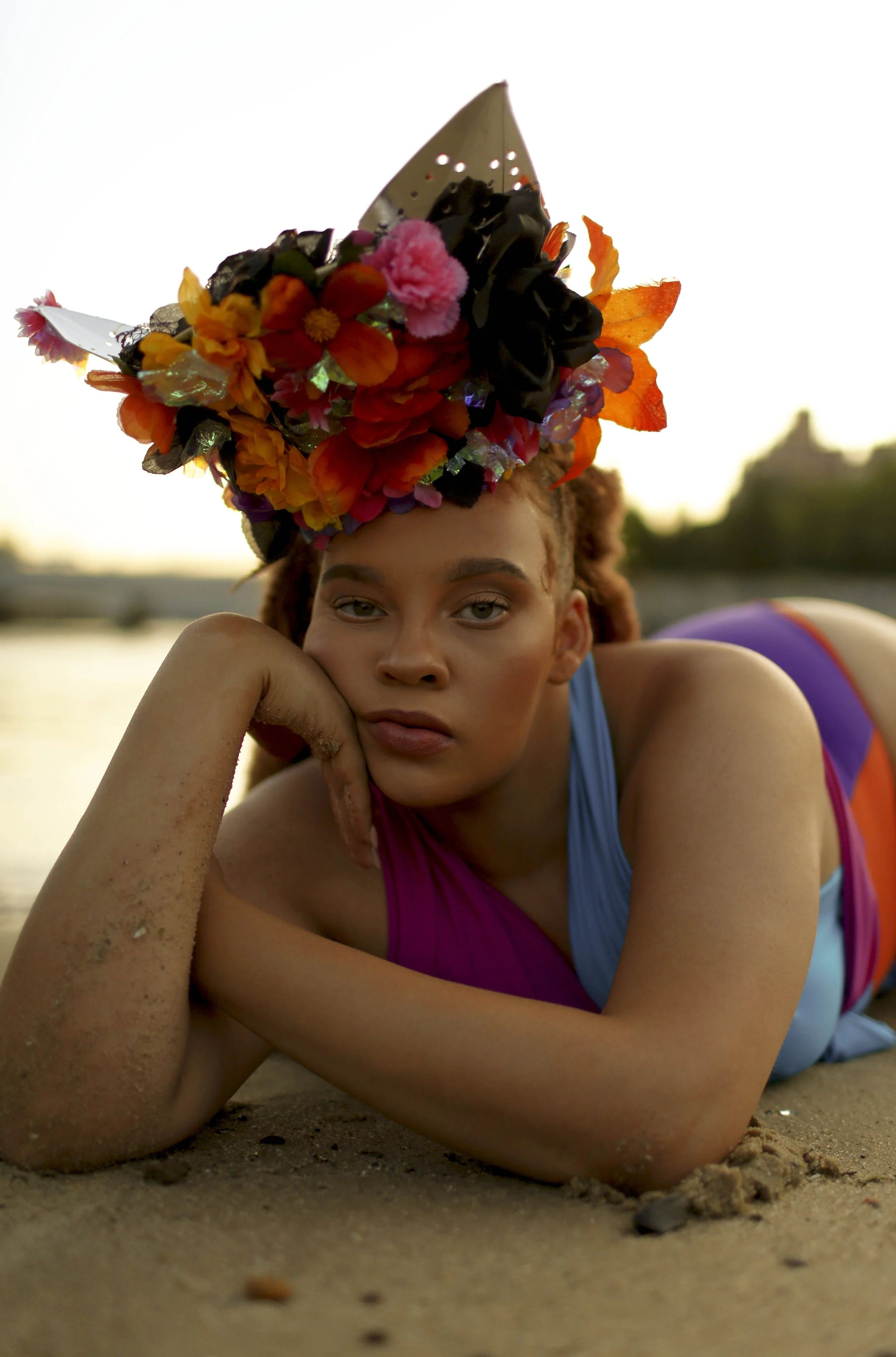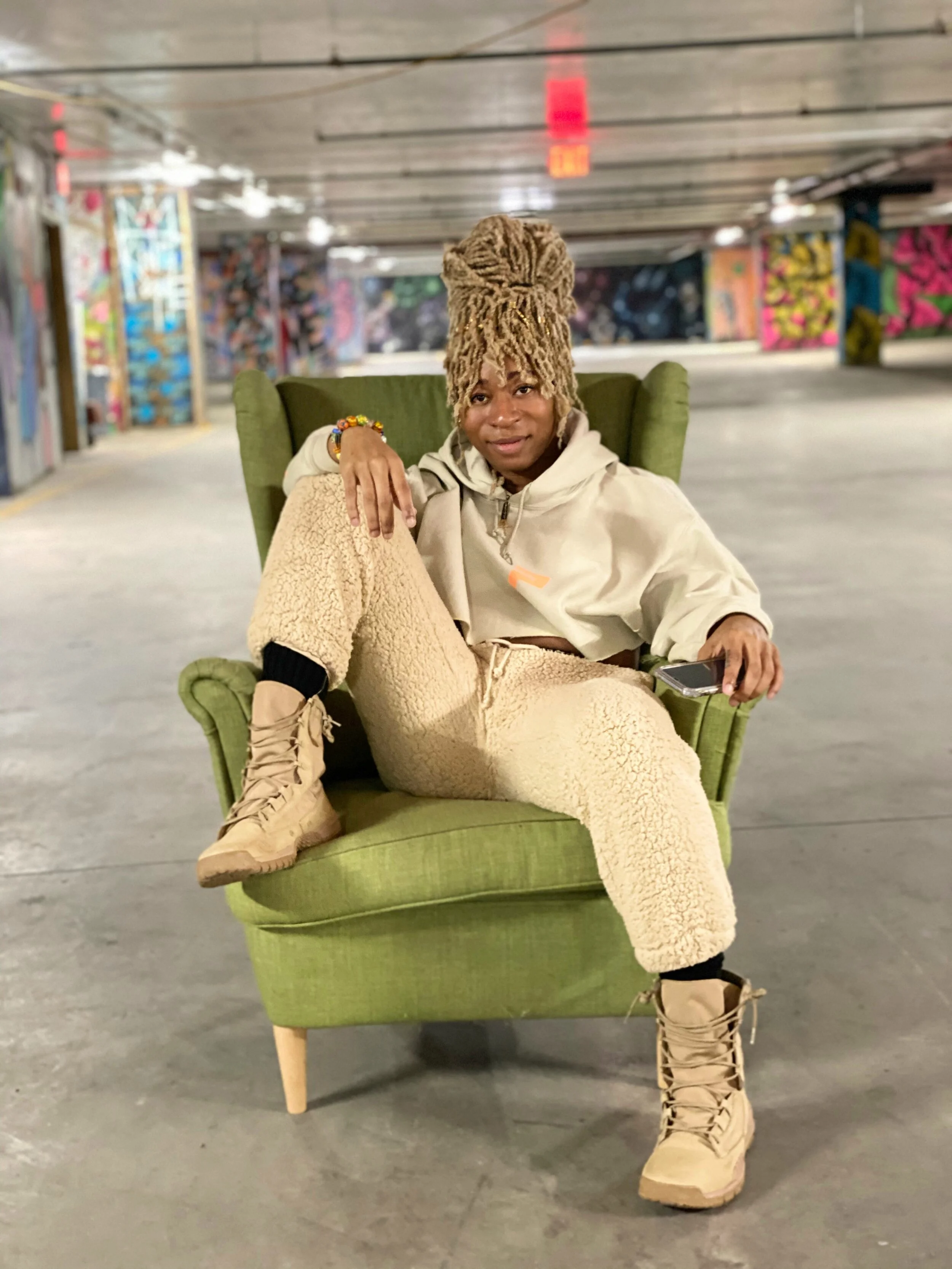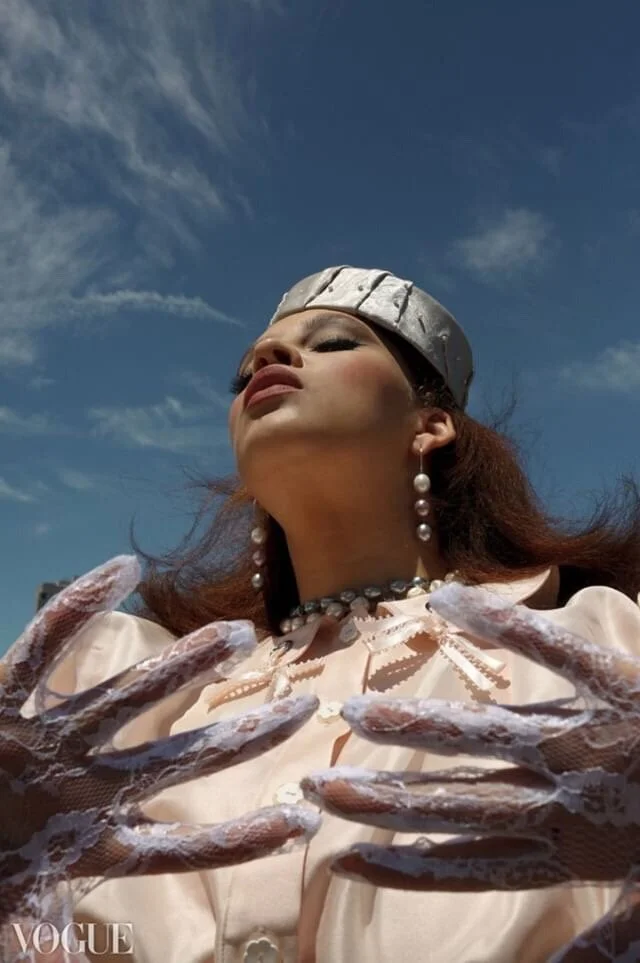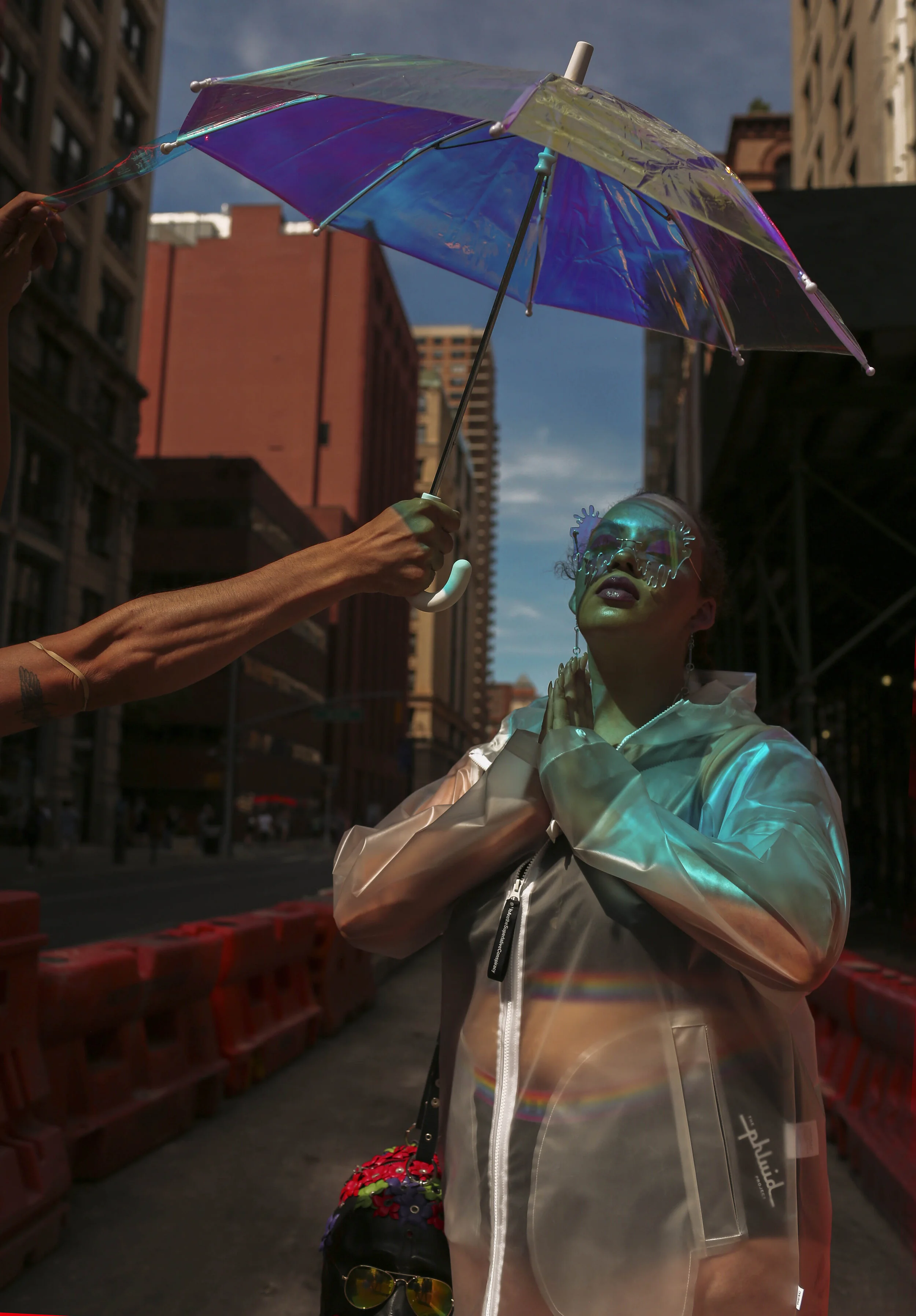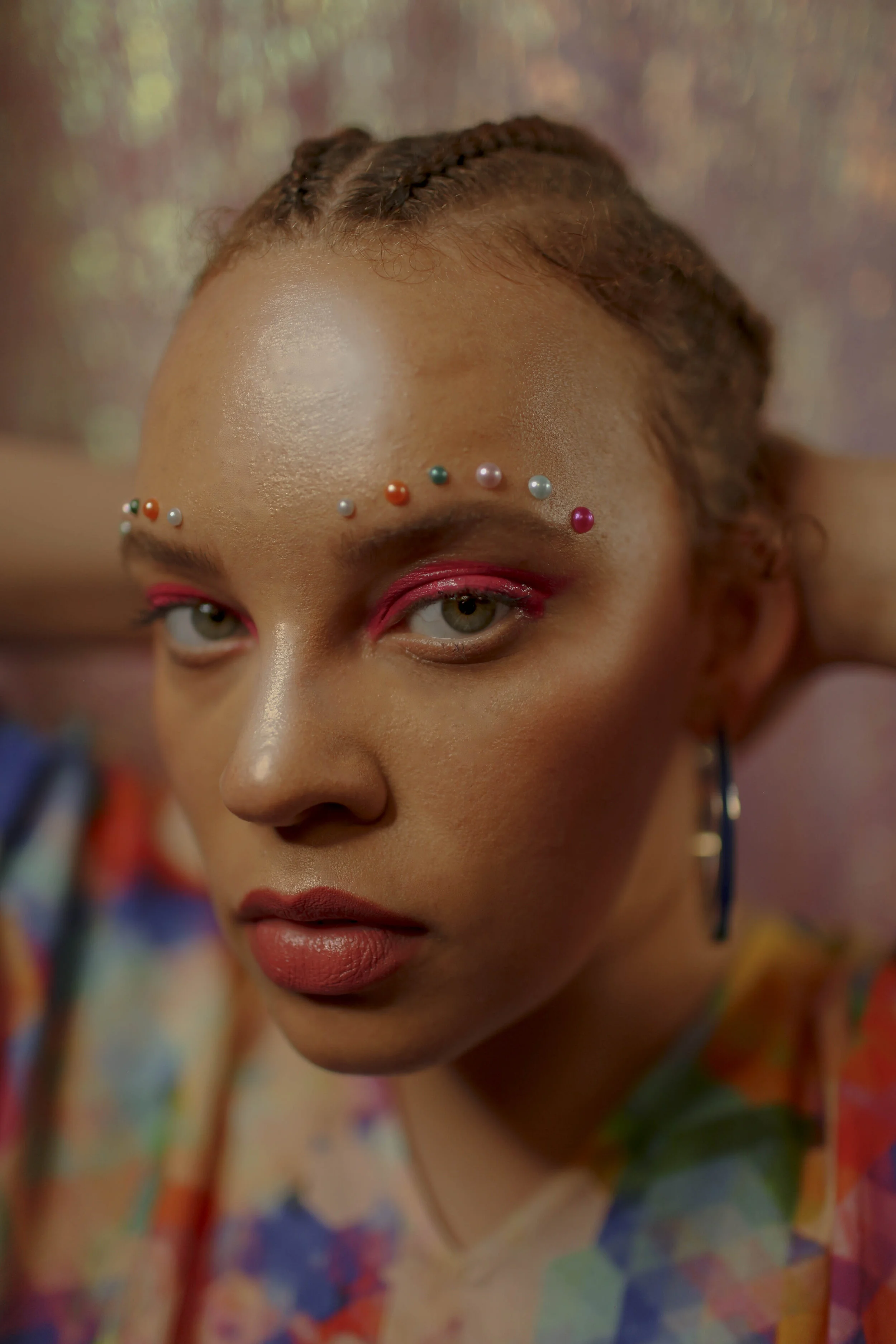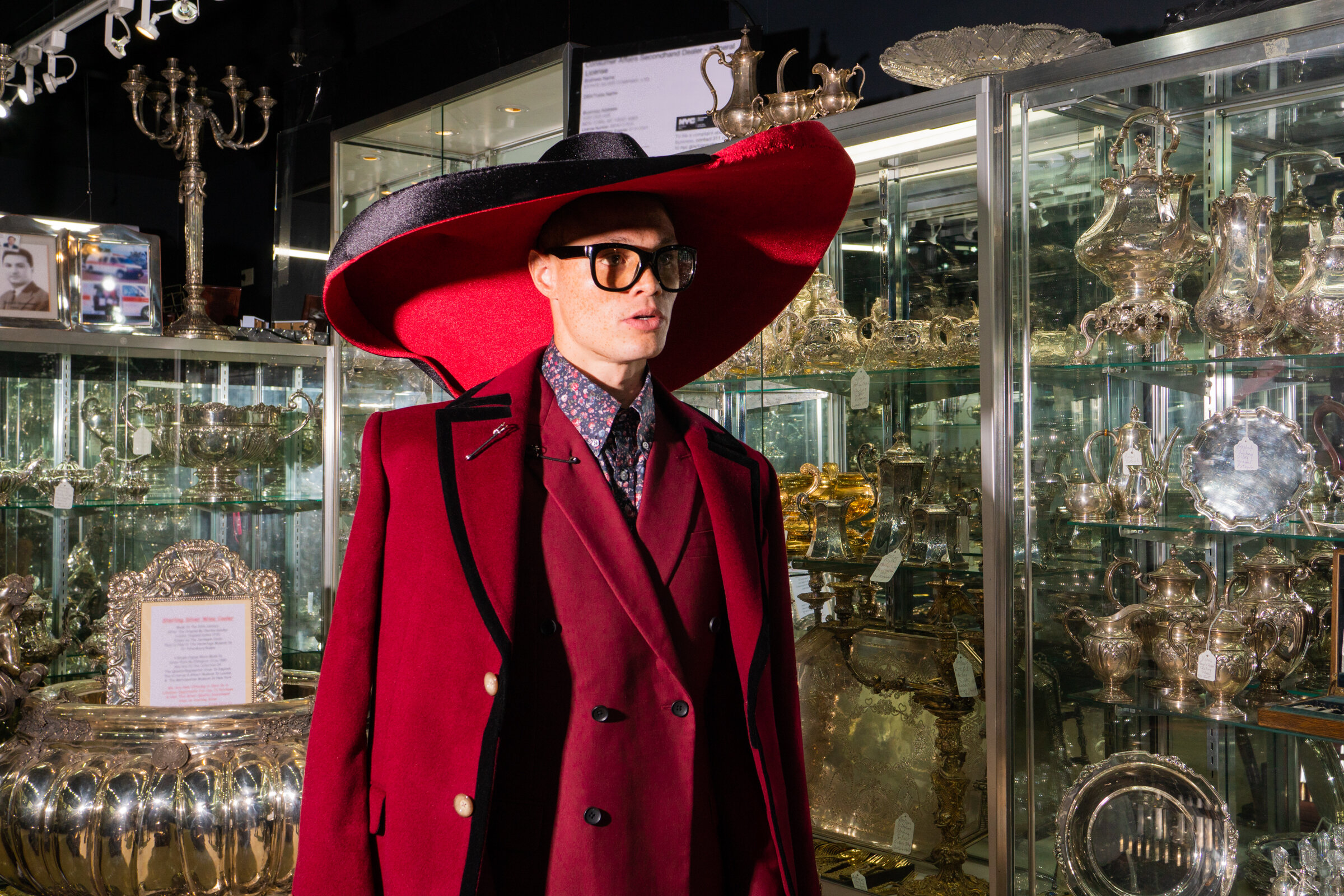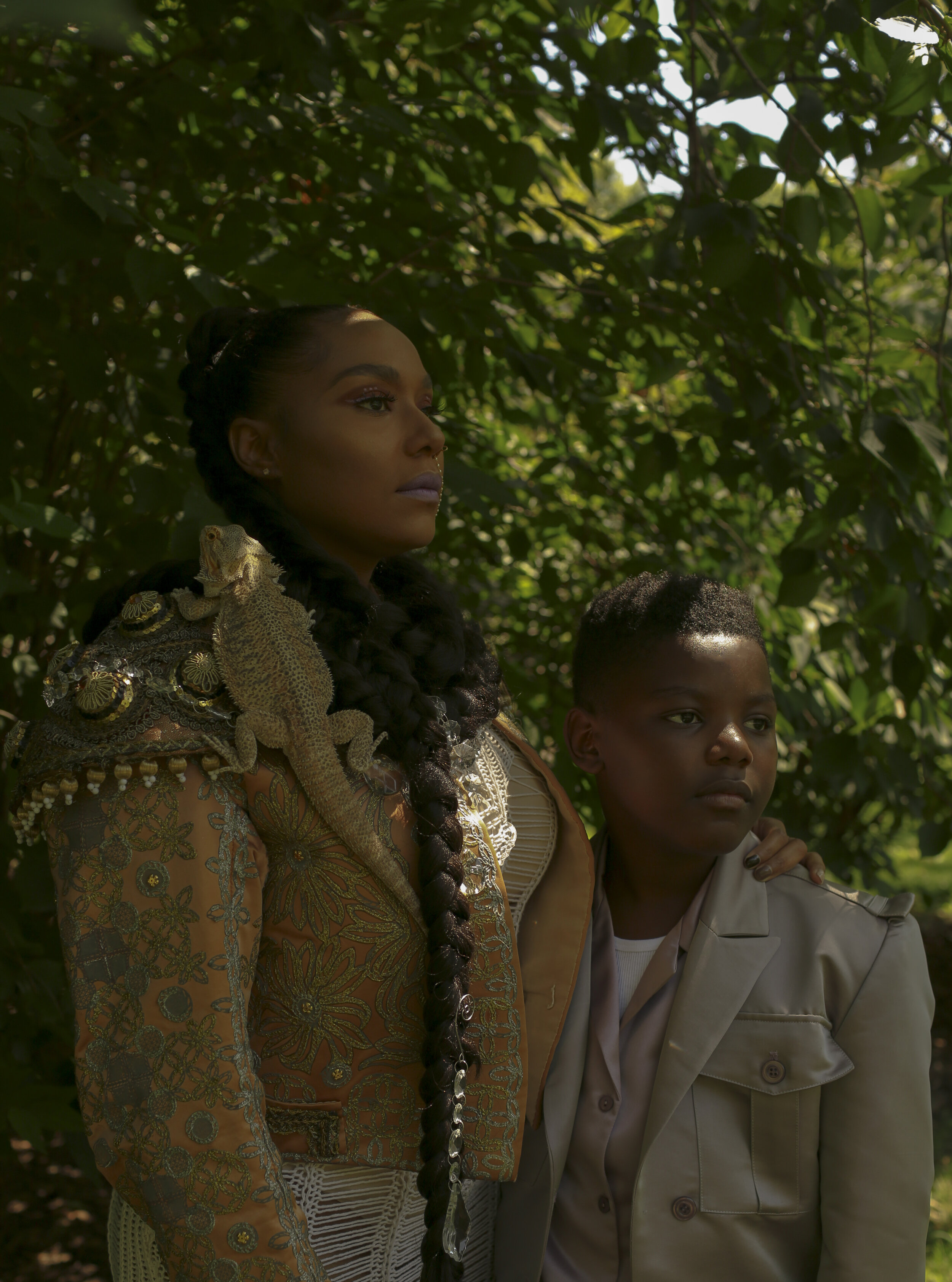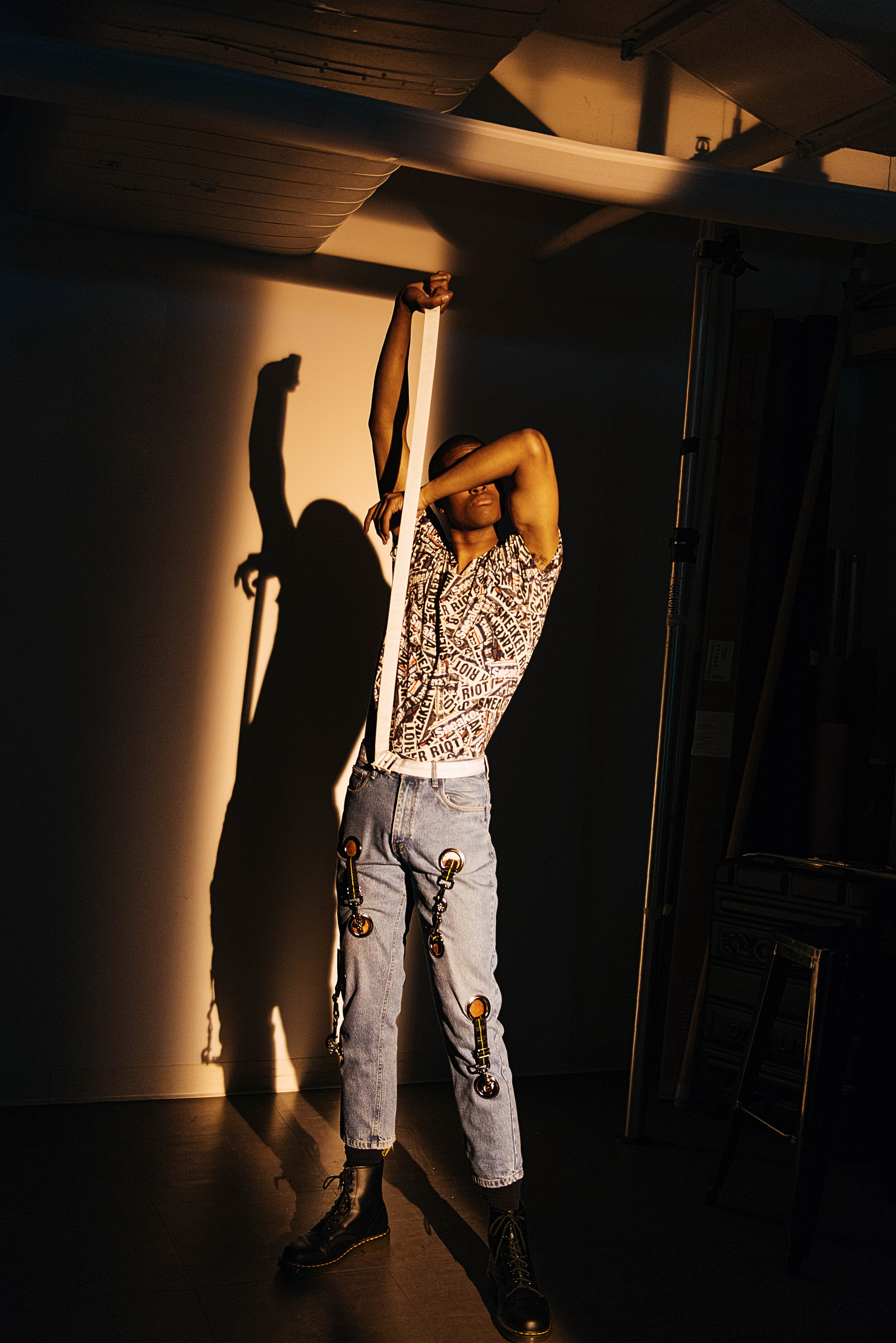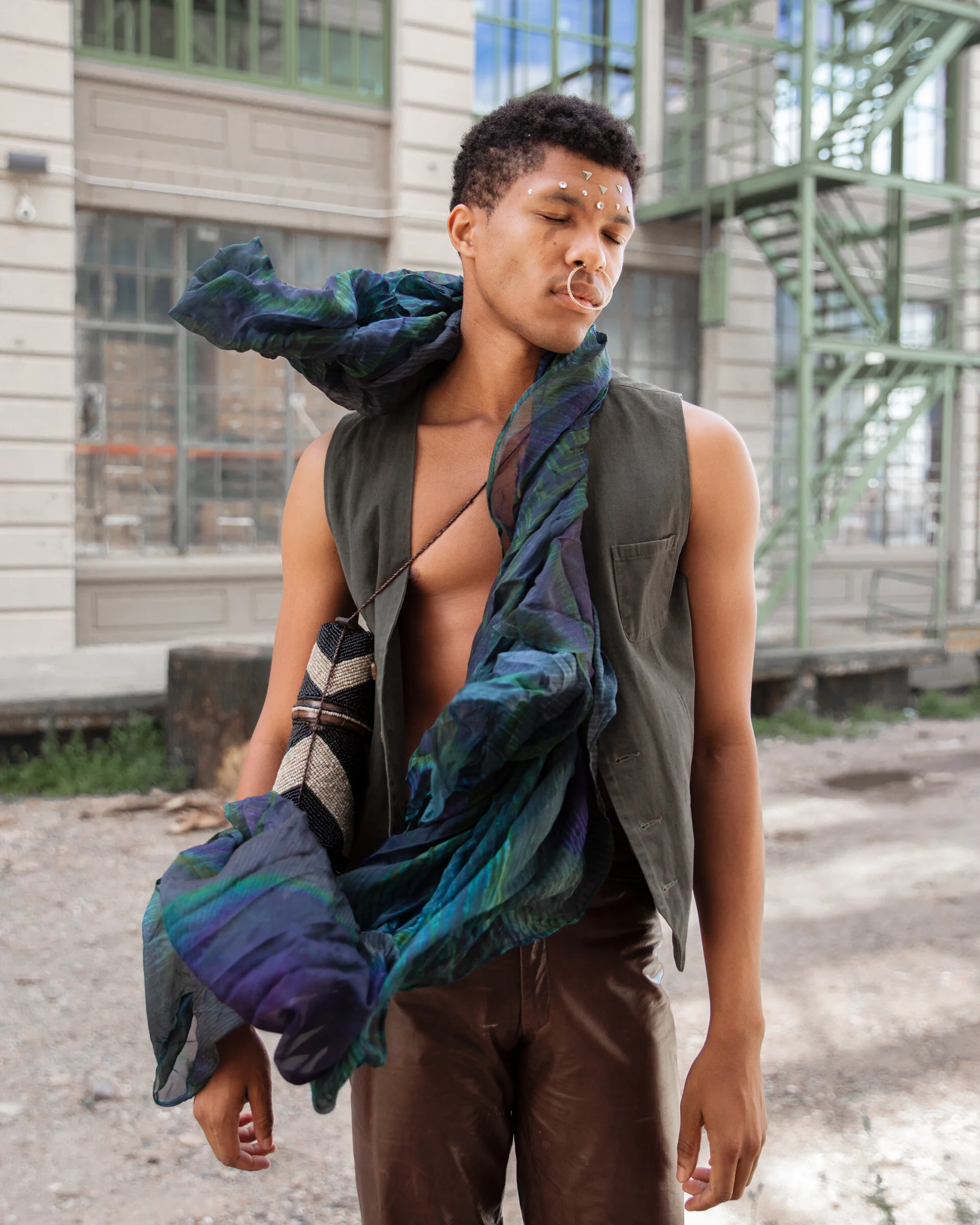Kafui Akakpo Reshapes the Plus-Sized Editorial
A Q&A with Kafui Akakpo.
Written by: Ashley Johnson
Ashley Johnson: What responsibility (if any) do you feel you have as a creative to sharing images of, or creating alongside Black women?
Kafui Akakpo: Although I'm not female, my main muse is a plus-sized Black woman Alexis Henry. I have two young interns. They are Black women. My make-up/hair tech is a Black woman. In my eyes, they are all up-and-coming fashion icons. The majority of the people who respond to my work are Black women. I listen to Alexis' struggles in the industry. I listen to my team's ideas about what Black beauty is to them. I listen to the women who DM me feedback about my shoots and ask them what they would like to see more of. Although my platform is in it's nascent- stages, it is mainly built around Black women. So I want to show Black beauty in all its sizes, shades, hair textures, and cultural complexities.
Kafui Akakpo | CRWNMUSE
AJ: How important is representation? Do you feel industries still have some strides to make to reach a truly inclusive place?
KA: Representation is the most important thing about my work and should be for everyone’s work. I like to use an analogy I learned about pain and depression when I think about its importance. I’ve learned that the key to overcoming any type of pain is recognizing that pain is universal, and no one is struggling alone. I think this concept carries over to representation as well. Most people, especially young ones, can overcome feeling outcast or unimportant if they are able to understand that they are not alone in how they look or feel.
For this reason, I feel like creatives have a responsibility to push for inclusion and diversity in their work. The majority of people who respond to my work are plus-sized women, and they are so grateful! Hearing things like, “Thank you! That’s what my body looks like!” NEVER gets old. We’ve made leaps and bounds in terms of inclusion, but the fact that I am only able to pull from maybe 1 out of every 10 designers for Lex’s shoots signifies to me that we still have a long way to go.
AJ: Is creating essential to who you are?
KA: I realized years ago how unstable and difficult the path to creative success is—and that I was unhappy when I was not pursuing my dream—it was definitely a catalyst for me. I choose this life and work my day job Monday - Friday. I incorporate fashion into purpose while producing the change I want to see in the industry with my editorials every weekend. I work seven days per week, and wouldn't trade it for anything. My favorite part of the process is collaboration. I love having an idea that seems so farfetched on paper come to life after sharing moodboards and concepts with my team.
AJ: Characterize the major themes or processes within your work. Why are you drawn to creating under said theme(s)/processes and who does your work speak to?
KA: I think that my work speaks to the underdogs of color in the fashion industry. Themes of body inclusivity, gender fluidity, and social justice are super important to me. I hope my work speaks to all of the underrepresented demographics in fashion. This includes people of all sizes, ethnic backgrounds, genders, and sexual orientations that are often overlooked in mainstream fashion.
AJ: You seem to have found an elegant balance of working with plus-sized models for their gifts rather than just for their bodies. Can you talk about this a bit? What is your approach?
KA: To be honest, the way I look at plus-sized models is NO different from how I look at standard-sized ones. I believe the industry needs to do the same and this will help eradicate exploitive photography.
When I met my muse, all I saw was her beauty and the fact that she wanted to move away from being in the commercial “box” and into a more editorial one. I had no idea that it was going to be exponentially more difficult to find pieces for her and to create art that we could both be proud of. When I fully understood this, I welcomed the challenge because it is SO much more rewarding to pull off a look when resources are so limited.
ALL women are multifaceted and have sexy, vulnerable and independent sides, amongst many others. I think the way to get past exploitation is to embrace the fact that plus-models are models. For standard-sized models, versatility isn’t a rarity. They can be edgy, sensual and elegant oftentimes all within a single editorial. Plus-sized models are still marginalized and aren’t given the same chance to show their versatility. This is due largely to the fact that the industry (which includes media, designers, and editors) tends to place them in the same commercial boxes with conservative silhouettes, frumpy and repetitive styling, and plain, uninspiring studio settings. To affect change, I like to hold “plus” models to the same standards that every other editorial model is held.
The CRWNMUSE Program spotlights the exceptional taste, art and magic of creators from everywhere. Interested in being a CRWNMUSE? Submit a body of work or a mix of your work here!
Pre-Order The Storytellers Issue with Issa Rae
Our founders sit down with the actress, writer and producer extraordinaire to discuss the latest season of Insecure, the importance of telling our own stories, entrepreneurship and more. Shipping in June.

